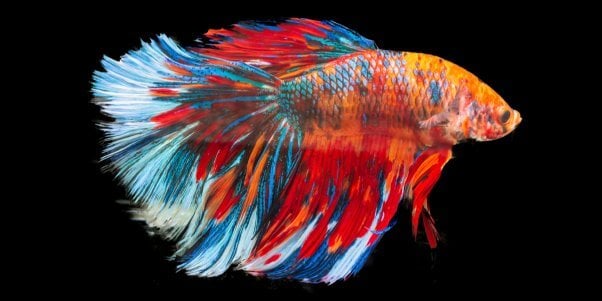Betta Fish Care: Important Tips for a Healthy and Delighted Pet Dog
Betta Fish Care: Important Tips for a Healthy and Delighted Pet Dog
Blog Article
How to Reproduce Betta Fish Effectively: Expert Techniques and Insights for Hobbyists Aiming To Expand Their Betta Collection
Reproducing Betta fish requires a nuanced understanding of genetics and environmental problems, making it necessary for enthusiasts to approach the procedure with both persistance and treatment. Developing an optimal breeding environment, picking the ideal sets, and observing the ins and outs of their courtship behaviors are foundational steps that can substantially influence the end result.
Recognizing Betta Fish Genes
Understanding the genetics of Betta fish is important for successful breeding, as it affects attributes such as color, fin shape, and actions. Betta fish show a diverse selection of colors and patterns, mostly established by their hereditary make-up.
Along with coloration, fin morphology is one more significant aspect of Betta genetics (betta fish). The form and dimension of fins are influenced by various genes, consisting of those that identify whether the fins are short, long, or veil-shaped. Recognizing these hereditary variations assists dog breeders predict the phenotypic end results of their spawn
Furthermore, behavior attributes such as aggressiveness and territoriality can also be influenced by genes. These actions play a crucial function in the breeding procedure, as they can influence generating success and the overall personality of the resulting fry. By adequately recognizing these genetic concepts, dog breeders can make educated decisions, eventually boosting their breeding programs and attaining preferable results.
Preparing the Breeding Environment
Creating an optimal breeding setting is important for the effective recreation of Betta fish. The first action in preparing this setting is to select a proper breeding container, ideally ranging from 5 to 10 gallons.
Following, take into consideration using a sponge filter or an air stone to supply mild water circulation without producing strong currents that can worry the fish. It is necessary to set up plants or breeding cones to provide hiding spots and promote comfort for the woman during the spawning procedure. Drifting plants, such as Java moss or water sprite, can additionally create a more natural atmosphere while facilitating bubble nest building by the male.
Before introducing the breeding pairs, make certain the water is conditioned and without hazardous chemicals, such as chlorine or hefty steels. betta fish. Normal water changes ought to be conducted to maintain optimal water quality, enhancing the chances of successful reproduction. With these prep work in position, the reproducing atmosphere will certainly support the health and wellness and well-being of both Betta fish
Selecting Breeding Pairs
Selecting the right reproduction sets is essential for achieving effective Betta fish reproduction. Healthy and balanced Betta fish display dynamic shades, clear eyes, and energetic habits.
Temperament is an additional crucial consideration, as Betta fish are recognized for their hostile nature. It is a good idea to choose a man and woman that exhibit compatible temperaments to lessen tension throughout the breeding process. A tranquil male can urge a smoother courtship, while a woman that is too aggressive may interfere with the process.
Hereditary background additionally plays a significant duty in internet the quality of the spawn. Breeding fish that are genetically diverse can reduce the threat of genetic health issues and boost the general vitality of the fry. It is valuable to investigate the family tree of both the man and female, concentrating on preferable characteristics such as fin type, shade patterns, and dimension.
The Breeding Process
The breeding procedure of Betta fish calls for careful planning and interest to information to guarantee an effective end result. Initially, it is crucial to prepare a suitable breeding storage tank, preferably a 5-10 gallon fish tank with a temperature level maintained at 78-80 ° F. The tank should be outfitted with a heating system, filter (preferably sponge type to stay clear of solid currents), and a lot of marine plants for the female to hide.
Once the environment is set, introduce the chosen breeding pair to the storage tank, enabling them to accommodate. Observe their behavior; the male will display elaborate courtship rituals, including flaring his fins and developing a bubble nest. If the woman shows rate of interest, she will display vertical red stripes indicating preparedness for spawning.
When the lady is responsive, the pair right here will involve in a mating embrace, throughout which the male feeds the eggs. Maintaining optimal water problems during this duration is essential for the growth of healthy and balanced Betta fry.
Caring for Betta Fry

Feeding Betta fry is essential, as they need a diet regimen high in healthy protein. They can be fed infusoria or liquid fry food, transitioning to finely crushed top notch pellets as they expand. Feed small portions several times a day to motivate healthy and balanced development without straining the tank with uneaten food.

As they mature, monitor their development closely and divide any hostile individuals to prevent damage. By providing a supporting environment and correct nutrition, enthusiasts can effectively raise Betta fry right into vibrant, healthy fish, inevitably improving their reproduction endeavors.
Verdict
Effective Betta fish breeding needs careful attention to genetic selection, ecological problems, and treatment for the fry. By understanding the genetics of Betta fish and preparing a suitable reproduction atmosphere, enthusiasts can improve the possibilities of generating vibrant, healthy offspring.
Report this page